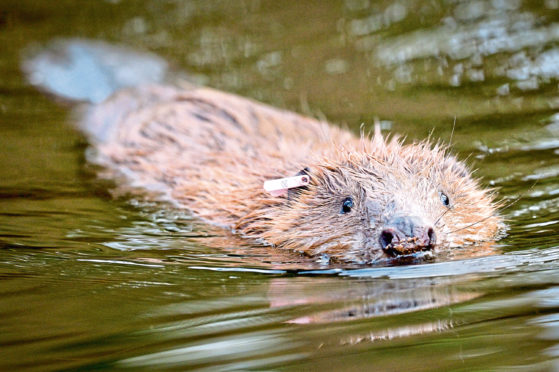The future of Scotland’s fragile population of wild beavers is at risk as this year’s beaver killing season begins, a coalition of 24 leading environmental charities, countryside access organisations, businesses and community groups warned last night.
Scotland’s baby beavers are officially seen as no longer dependent on their mothers from today – meaning farmers with unwanted beavers on their land can again apply for licences to shoot beavers.
Last year, 87 beavers, a fifth of the Scottish population, were shot and there are fears the scale of the killing could be replicated this year.
Under Scottish Government regulations, beavers cannot be relocated outside of their existing river catchments, and can only spread naturally from their ranges in Knapdale in Argyll and Tayside – leaving farmers whose crops are sometimes damaged by beavers with little option but to apply for a licence to kill the animals.
The environmental coalition, the Scottish Rewilding Alliance, says each beaver shot is a “wasted life” that could have helped to “rewild” Scotland.
Beavers build small dams – creating nature-rich wetlands that support a wealth of wildlife and soak up carbon dioxide, and which reduce flooding and improve water quality.
The furry aquatic animals can also benefit local communities by becoming a tourist attraction.
Steve Micklewright, convener of the Scottish Rewilding Alliance and chief executive of rewilding charity Trees for Life said: “Beavers are brilliant for wildlife and people, but in Scotland they’re at risk as a species because the Scottish Government allows their legal killing.
“Needless bloodshed could be reduced by allowing beavers to be moved to where they would be welcome.”
Since Scotland’s beavers became a protected species in May 2019, those wanting to kill beavers or remove their dams or lodges must obtain a licence from Scottish Natural Heritage (SNH).
Rebecca Wrigley, chief executive of Rewilding Britain, said: “Beavers can be key allies in tackling the climate and nature crises.”
The Scottish Rewilding Alliance has launched a petition it says will help show the government it should save the country’s fragile wild beaver population.
The petition – which can be supported at
treesforlife.org.uk/savebeavers
until August 27 – has already been signed by almost 8,000 people.
James Nairne, of the Scottish Wild Beaver Group, said: “There are many landowners who would love to have beavers on their land.
“Moving not killing beavers would be a more humane and forward-looking approach to the conservation of this struggling species.
“It will also help address fears that a genetic bottleneck is developing in the Tayside beaver population.”
SNH has identified over 100,000 hectares of “core beaver woodland” in Scotland where beavers can thrive.









